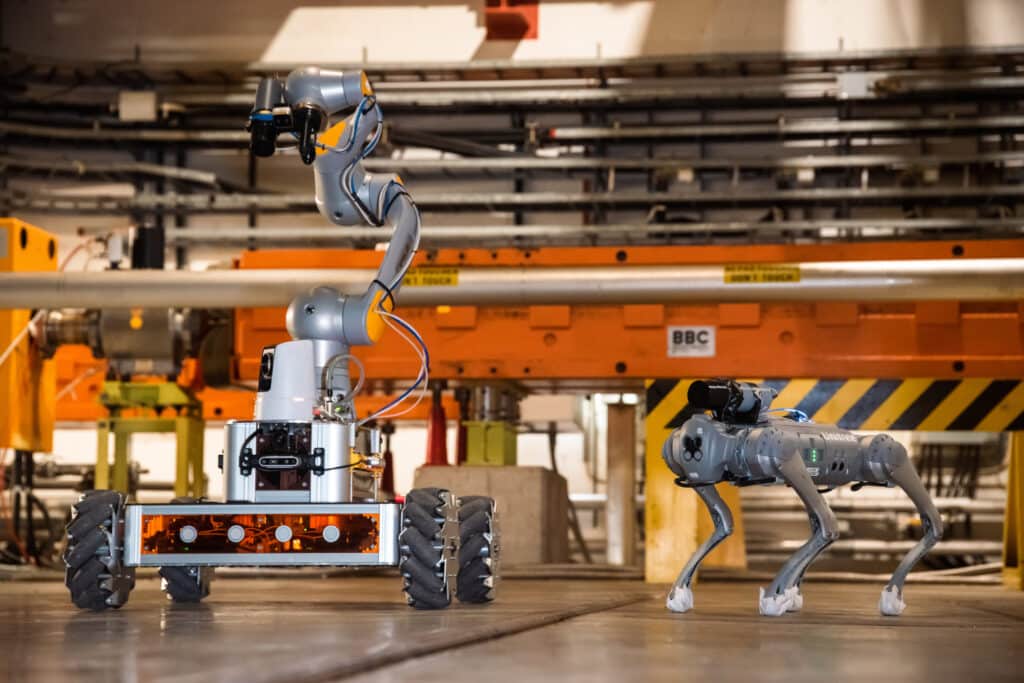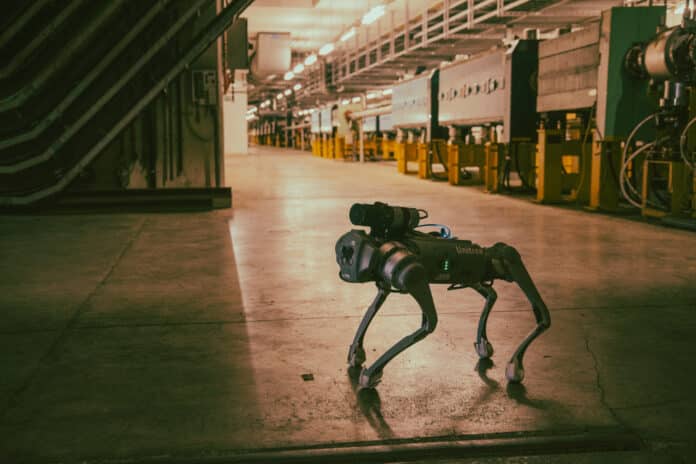Scientists at CERN are testing a cutting-edge robotic solution known as the CERNquadbot that identifies potential radiation leakages in environments challenging to navigate both for humans and other robots employed at the research center.
This innovative four-legged robot has recently completed its maiden radiation protection test within the Laboratory’s expansive North Area, which is a significant milestone towards enhancing exploration within CERN’s intricate facilities.
The CERNquadbot is seen as a promising addition to CERN’s robotic arsenal. What makes it unique is that it has four legs instead of wheels or tracks, which provides greater stability and maneuverability on uneven terrains. It was developed in Building 937, where CERN’s most advanced robots were created.
“There are large bundles of loose wires and pipes on the ground that slip and move, making them unpassable for wheeled robots and difficult even for humans. We carried out a proof-of-concept survey with the Radiation Protection group in this area. There were no issues at all: the robot was completely stable throughout the inspection,” said Chris McGreavy, a robotics engineer in CERN’s Controls, Electronics and Mechatronics (CEM) group.

CERN has a variety of robots that include the modular CERNbot in different sizes and configurations, such as the CERNbotSPS, the Train Inspection Monorail (TIM), and CRANEbot. These robots can carry heavy payloads like robotic arms and other tools but have limitations in entering cluttered areas and moving over unstructured surfaces and on steps.
To overcome these challenges, the team is now developing tools and advanced control algorithms for the robodog and its successors. The goal is to deploy them in experiment caverns, such as that of the ALICE detector, which are complex environments with metal stairs and narrow corridors designed for humans or, well, robots with legs.
The CEM group is collaborating with the Experimental Physics R&D department to create this robodog that can maneuver almost throughout the entire cavern. The robots will be capable of regularly monitoring the state of the caverns and their environmental conditions. They can quickly identify water or fire leaks and other incidents, such as false alarms, which can significantly impact the operation of the machines in the caverns and tunnels.
At CERN, every robot is designed uniquely to address specific challenges and complement each other. Take, for instance, the Large Hadron Collider’s 27-kilometre tunnel, where rails are attached to the ceiling. The TIM monorail robot is equipped to move along these rails effortlessly, providing a great view of the tunnel from above.
However, the new small robodog developed by CERN can perform activities on the ground, especially under the beamline, which no robot could access before. This robodog is expected to collaborate with the four monorail robots currently in operation in the LHC.
“The TIMs are used for monitoring the large distances of the LHC from above and can travel long distances without recharging. They can deploy the quad boots in local areas to get more information about specific places that the TIM cannot easily access,” explains McGreavy in the press release.
The CERNquadbot seems to be a promising addition to the CERN robotics family. This robot will be able to explore new areas of the caverns that the previous wheeled, tracked, or monorail robots couldn’t. The Beams department is continuously innovating and engineering robots that can navigate even the most challenging environments at CERN.
